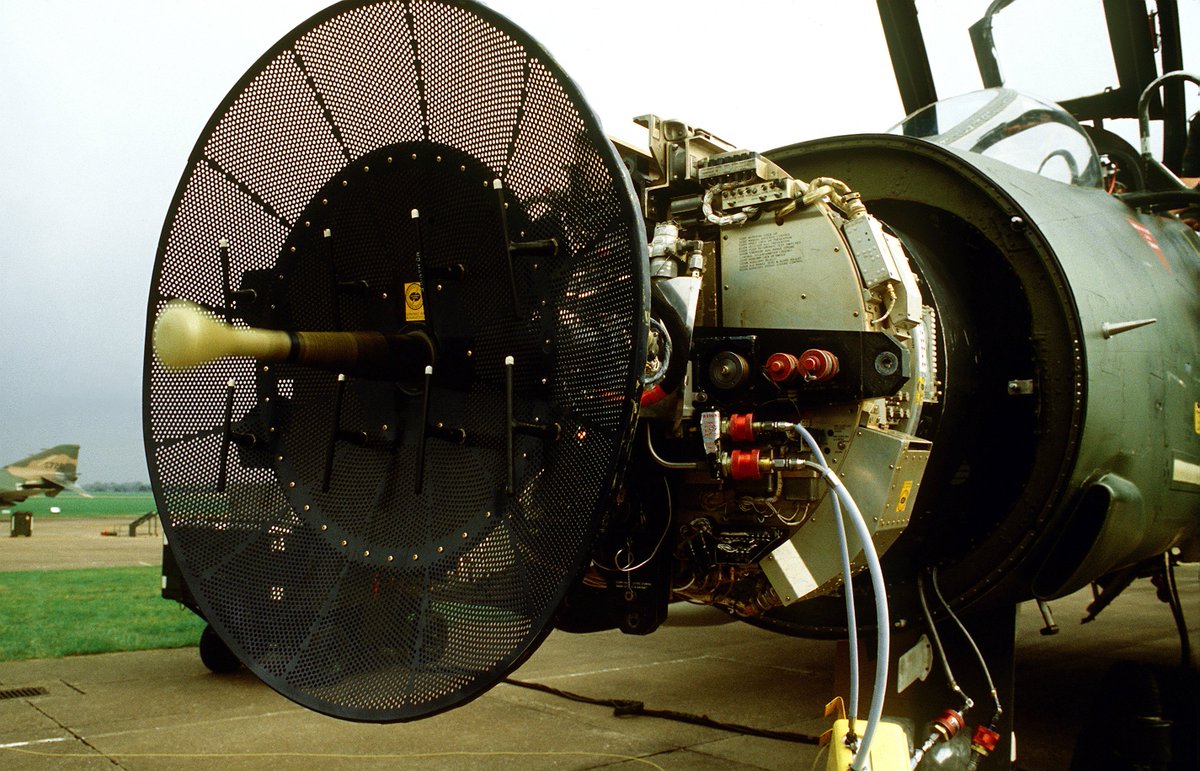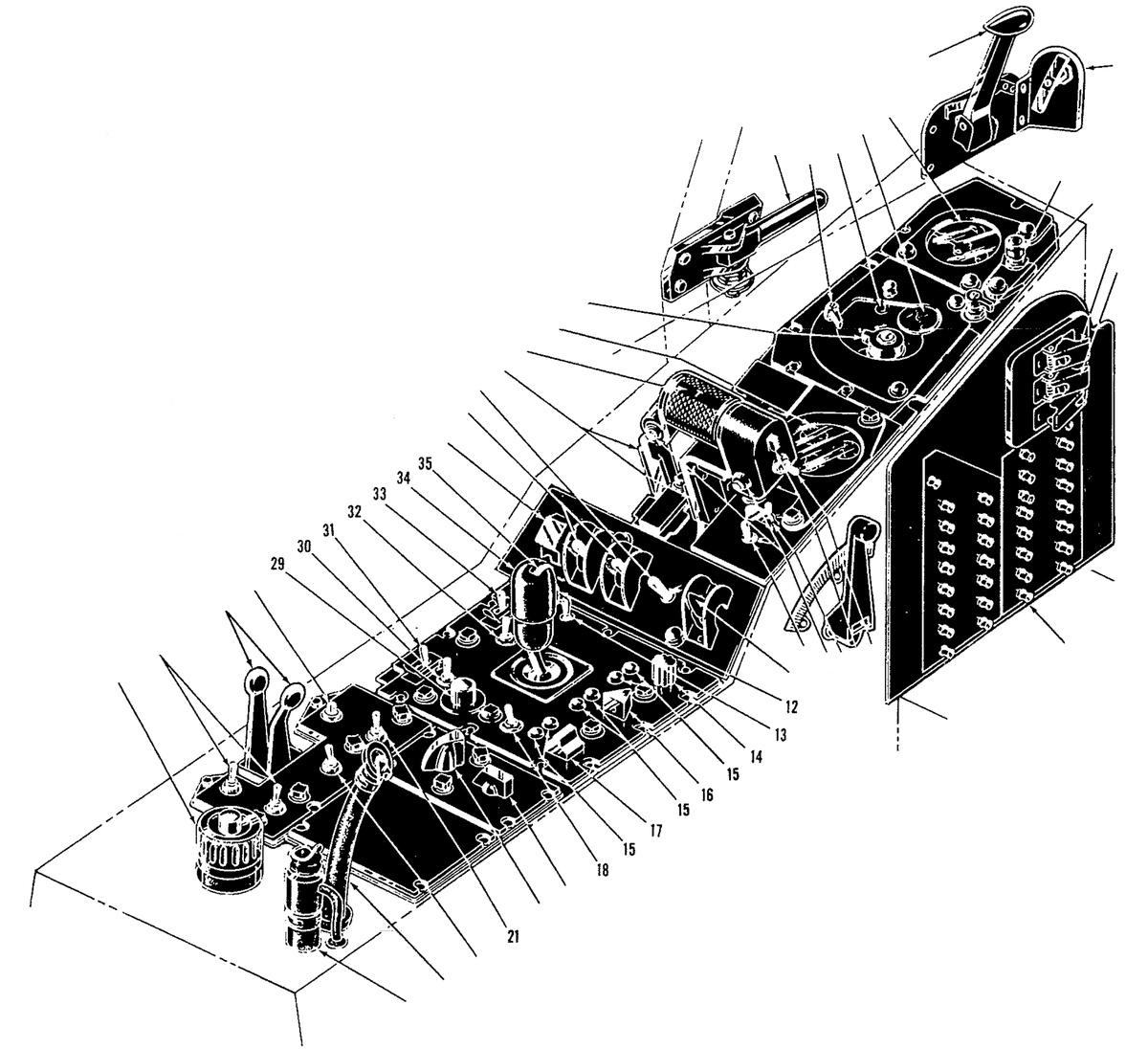In 1960, the Broad Jump program to upgrade the US Air Force's newest interceptor's radar, the F-106's MA-1 Automatic Weapon Control System, began. This would be a notable overhaul and improvement of the MA-1 system, giving it exceptional Electronic Protection capabilities. 

The first systems added under Broad Jump were anti-chaff devices. One of these such devices was the leading/trailing edge range gate tracker. Normally a range gate operates as an evenly split gate, as described below. 

A leading-edge range tracker sacrifices some range accuracy for electronic attack resistance. A trailing edge tracker works the same way, but in reverse. 

In this case, though, the leading/trailing edge tracking options were primarily designed to allow for chaff resistance. Jamming returns were handled in other ways. Though this is an excerpt referring to the F-102's MG-10, it applies to MA-1 just the same.




This passage also refers to range-rate memory, another part of the nose-tail computer that increased the stability of a radar lock and would help automatically re-lock the target once the target had stopped using expendable countermeasures, such as chaff and chaff rockets.
From what I can find, the nose-tail computer on the F-106 after Broad Jump was also capable of preventing range-gate pull-off attacks against advanced response(not repetition) jammers, though I'm honestly not sure how it was able to avoid them without manual nose-tail selection.
Now we get into the radar tune switch. This changed under Broad Jump(old switch shown later), and in this format, it took advantage of the next major modification: the hydraulically tunable magnetron. 

As compared to previous Hughes tunable magnetrons which required the pilot to manually adjust the frequency, the new one had significant advantages in terms of frequency adjustment speed, allowing for computer-controlled modes.
The first was the "normal" mode. After Broad Jump, the jittered pulse repetition frequency (how much time between each emitted pulse) was augmented by pulse-to-pulse frequency shifts, making repetition jammers and most response jammers nigh useless against the Six.
F MIN and F MAX appear to be simple selections for the extreme ends of the magnetron's frequency range.
The final mode, SNIFF, is by far the most interesting. This took shape as early as late 1957, but would not enter service until Broad Jump in the early '60s. This, as described below, would tune the radar to avoid jamming frequencies. 

At the same time as the tunable magnetron was installed, amplifier circuits were modified with new parametric amplifiers to lower the noise floor. This increased the search and detection range by about 30%, a huge upgrade in capability.
The next system was something called "Silent Lobing", or Lobe on Receive Only (LORO). Silent lobing is an interesting way to prevent angle deception jamming by inverting the "conical scan" pattern to the receiving antenna. Conical scan works like so: 

When a target is properly centered, the amplitude change is zero between all bearings. Here, you can see the target is not centered.
Normally, the radar feedhorn (the white thing on a stick) moves in that pattern to create that conical scan. However, a jammer can track that pattern and respond at certain times to create a false position. (APQ-100 | APQ-109 with feedhorn spinning)




This method is called inverse-gain deception jamming. A very good explanation of this can be found here: emsopedia.org/entries/invers…
There are two primary ways to handle IGDJ without a monopulse radar. In the case of AN/APQ-120 on the F-4E, it was done by constantly varying the feedhorn nutation rate. 

Silent lobing (Lobe On Receive Only, LORO), the other method, is different. The feedhorn stays stationary and the receiver nutates to generate the conical scan pattern. This prevents a jammer from ever figuring out the scanning rate, making this type of angle jamming impossible. 

Broad Jump furnished the MA-1 with this LORO system and four selectable "lobing frequencies"(essentially the same as different conical scan frequencies), to work around a Soviet jammer operator's potential attempts to guess the lobing frequency.
Unfortunately, I don't have any information on exactly how this worked. It's not clear from the antenna feedhorn design. On the upside, this system appears to have not been as vulnerable to a monopulse jamming technique called cross-polarization.
The MA-1 system had initially been fitted with something called MTI, or moving target indication. This was an unusual but ingenious version of MTI, designed to take out low-altitude bombers.
However, low-altitude bombers never materialized as a threat to the CONUS.


However, low-altitude bombers never materialized as a threat to the CONUS.


Recognizing this as early as the early-60s, ADC moved to replace the MTI system with the much more relevant and effective Infrared Search and Track System, IRSTS. This was a very advanced system, drawing from experience developing IRSTs for the YF-12's AN/ASG-18. 

The IRSTS, which deserves a thread of its own, provided two different options: independent scan and lock-on, if something had gone wrong with the radar or an intense form of jamming had prevented the radar from being used, and slaved mode.
In slaved mode, the radar would be slaved to the IR, allowing for radar lock-on to create a situation where IR and radar missiles could be fired. 

There is some indication that this could go the other direction(radar-->IR), as well as some indication that this was a multi-sensor lock, preventing the tracking system from accepting error signals unless the IR and radar produced the same ones, but I have no sources for this.
Either way, the IRSTS was a huge upgrade in capability, allowing for much better handling of complex jamming environments and much more advanced electronic attack methods.
After Broad Jump and until the introduction of F-15 MSIP, I strongly believe that the F-106's MA-1 was the best airborne radar in US service when it came to dealing with the Soviet bomber threat. Its electronic protection measures were truly impressive for the time. 

• • •
Missing some Tweet in this thread? You can try to
force a refresh


















